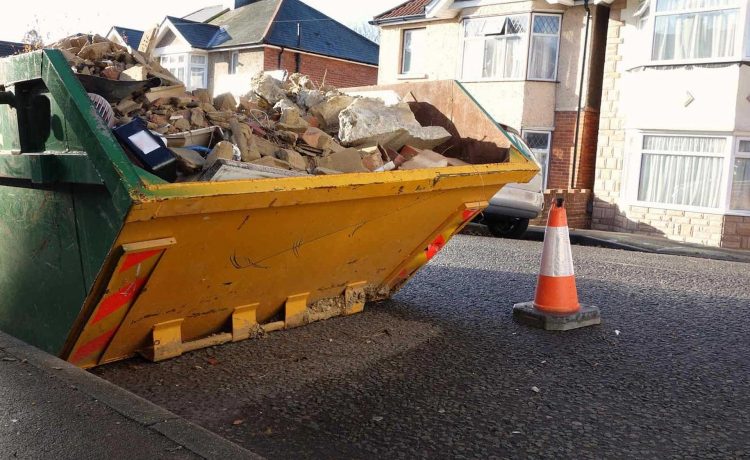Whether it is a clear-out at home, renovation, or garden waste removal, the logical way of dealing with it is skip hire. There are a few primary considerations that have to be made if you wish to enable a smooth experience with no hassles. We will guide you on how to make the most of your skip hire. From understanding the right skip size to use for the purposes at hand right down to the local regulations you must comply with, we have got you covered.
About Skip Hire
Skip hire, in simple terms, means hiring large waste containers, called skips, in a fast and convenient way to remove waste items. Skips can offer an effective way of managing your waste if you are modifying your house, carrying out a clearance job, or perhaps undergoing a large garden renovation. There are some shrewd tips and tricks that really work to make everything easier and more cost-effective when it comes to hiring a skip.
Choosing the Right Skip Size
One of the first steps towards a better experience with hiring skips is choosing an appropriate size. Skips are available in all sizes, from small mini skips to large roll-on and roll-off skips. The right size will ensure that you get enough storage space for the waste without having to spend on useless extra capacity.
- Mini Skips (23 cubic yards): Meant for small projects within the home, such as bathroom refitting or backyard clearance.
- Midi Skips (45 cubic yards): Suitable for larger domestic projects, like a kitchen renovation.
- Builder’s Skips (68 cubic yards): Perfect for more extensive renovations or medium-sized construction projects.
- Rollon Rolloff Skips (2040 cubic yards): Best for large construction jobs or significant commercial waste.
It’s important to gauge how much waste your project will produce and to choose an appropriately sized skip. Filling a skip too full might result in extra charges or even the hiring of another skip, yet hiring too big a skip will needlessly cost more.
Understanding Local Regulations
It is recommended that the necessary compliance with any local regulations be checked before hiring any skip. In most cases, when placed on public roads, a skip will require a license from the local council. The license can often be arranged by the skip hire company, but it is good to reflect on this so that penalties and legal problems are not incurred.
Furthermore, there are always items that are not suitable for disposal in a skip. These generally include items such as:
- Hazardous waste (asbestos, chemicals, batteries)
- Electrical appliances
- Tyres
- Paints and solvents
- Gas cylinders
Knowing what you can’t put into a skip prevents any fines from being incurred and guarantees safety in disposing of your waste.
Maximising Skip Space
To get the most from a skip hire, it’s essential to maximise the capacity of the skip. By better filling your waste, you may be able to avoid needing a second skip, which will cost you more.
- Break down large items: Disassemble furniture and break down bulky items to take up less space.
- Load flat items first: Start by loading flat items like doors or wooden panels at the bottom of the skip.
- Fill gaps: Use smaller items to fill in the gaps between larger pieces, ensuring no space is wasted.
- Avoid air pockets: Try to avoid leaving large air pockets in the skip by packing items tightly together.
By carefully packing your skip, you can make sure you’re using every inch of space effectively.
Scheduling the Skip Hire
Timing is crucial when it comes to skip hire Maidenhead. Ensure your skip arrives when needed and is removed promptly.
- Plan your project timeline: Coordinate the delivery of the skip with the start of your project so you can begin filling it as soon as it arrives.
- Avoid peak times: Skip hire companies may be busier during certain times of the year, such as spring or summer. Booking in advance can help ensure availability.
- Allow enough time: Consider the duration of your project and hire the skip for an appropriate length of time. You don’t want to rush through your work or pay for extra days unnecessarily.
Scheduling your skip hire thoughtfully will help avoid delays or added costs.
Considering Accessibility
This will include considering the placement and location of the skip. The location of the skip should be as convenient as possible for both you and the skip hire company. Be sure there is ample space that will allow the skip delivery truck to drop off and pick up the skip without hindrance. Think about your neighbours as well, so the skip does not sit where it blocks driveways or pathways.
If you are going to place the skip on your driveway, make sure that the surface can hold the total weight of your fill-in skip without being damaged. Space may be restricted, and you may have to consider other solutions, like placing the skip on a road with a permit or anywhere else nearby.
Ensuring Safety
Safety is a priority when using a skip. Observing these guidelines will ensure a safe and secure skip hire experience:
- Avoid overloading: Never fill the skip beyond its sides, as this can be dangerous when the skip is being transported.
- Distribute weight evenly: Place heavier items at the bottom of the skip to prevent it from tipping over.
- Cover the skip: If your skip will be left outside overnight, consider covering it with a tarp to prevent unauthorised use or weather-related issues.
Taking these precautions will help prevent accidents and ensure a smooth removal process.
Conclusion
Making your skip hire experience better is all about preparation: choosing the right size, understanding a little about local regulations, and filling the container to its capacity. Follow these enhancements to the tips, and you’ll be sure that your project is smooth, straightforward, and absent of unnecessary stress. Managing waste with a skip is bearable, but some thought applied can make it much more powerful and free from problems with your home project.




